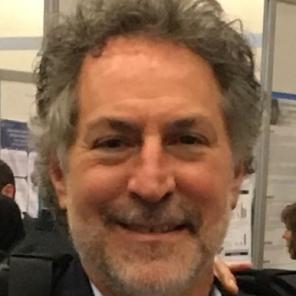
Joe Oxman received his Ph.D. in organic photochemistry from Northwestern University (1983). He has been employed by 3M for 38 years and is currently a corporate scientist. He is a developer of many dental and non-dental technologies and is considered a global expert in photocurable systems, nanotechnology, structural composites, hard tissue adhesives, glass ionomer materials, orthogonal smart-materials, bioactives, and technologies to minimize polymerization shrinkage stress. He has 115 issued U.S. patents, more than 100 publications/abstracts in peer-reviewed journals, and has been an invited global lecturer for more than 350 keynotes, presentations, and dental school curricula. He has received many international recognitions, including induction into the prestigious 3M Carlton Society (2003), two American Chemical Society (ACS) Cooperative Research Awards (2007 and 2020), the University of Colorado Engineering & Applied Science Corporate Advocate Award (2007), the IADR Peyton Skinner Award for Innovation in Dental Materials (2013), ACS Industrial Polymer Science Award (2016), and induction as an ACS Polymer Fellow (2017). He was instrumental in co-establishing the NSF Cooperative Research Center on “Fundamentals & Applications of Photopolymerization” (Universities of Iowa and Colorado). He currently serves on the Board of Directors of AADOCR, the MinnCResT External Review Board, and previously served as the 3M Director of Research for the University of Minnesota Dental Research Center for Biomaterials and Biomechanics and as a coach and judge for the Discovery Education/3M Young Scientist Challenge.
How did you first learn about AADOCR and what motivated you to join?
I first learned about I/AADR and now AADOCR nearly 38 years ago, shortly after I joined the 3M Dental Products Laboratory as a product developer in 1983. As a newly minted Ph.D. in the field of organic photochemistry with no dental materials background, I was unaware of AADR at the time. My senior 3M colleagues urged me to join I/AADR to both learn about the world of dental research and to establish relationships with thought leaders in this field. The rest is history!
What do you find to be the most valuable benefit of AADOCR membership?
There have been many valuable benefits of my AADOCR membership throughout my career. While the research learnings are extremely valuable, my membership has successfully enabled extensive networking with peers and colleagues from academia, government, and industry. These relationships have led to numerous collaborations, teaching opportunities, publications, global understanding of new dental paradigms, and, ultimately, the invitation to serve on the AADOCR Board.
Thank you for volunteering your time to serve on the Board; what motivated you to run for office? What do you hope to accomplish while serving in this position?
It’s certainly a great honor to serve. In my case, I was invited to join the Board in 2020 as the lone corporate scientist. During my three-year appointment, I would like to help AADOCR to grow by anticipating and creating the future of oral health by exploring and integrating global healthcare and technology megatrends. It’s my hope and desire to increase the membership well beyond the more traditional researchers’ primary focus on dental opportunities and solutions. The oral cavity is the gateway to the entire body!
Why is it important to volunteer within AADOCR? What do you view as the best way for other members to become more involved and get the most out of their membership?
Volunteering for AADOCR is an important and wonderful way to have a voice for facilitating positive change and a way to lead and inspire the next generation by setting a proactive example. It’s important for us to ask two key questions: 1) What if? (opportunities) and then establish 2) What’s possible? (solutions). The best way to get other members involved is to urge them to get started with setting small and achievable goals, either locally or nationally. For example, serve on a local chapter committee, volunteer to be a session chair, establish one or two new relationships at a conference. Personal and professional growth can only be achieved by getting comfortable with being a bit uncomfortable.




